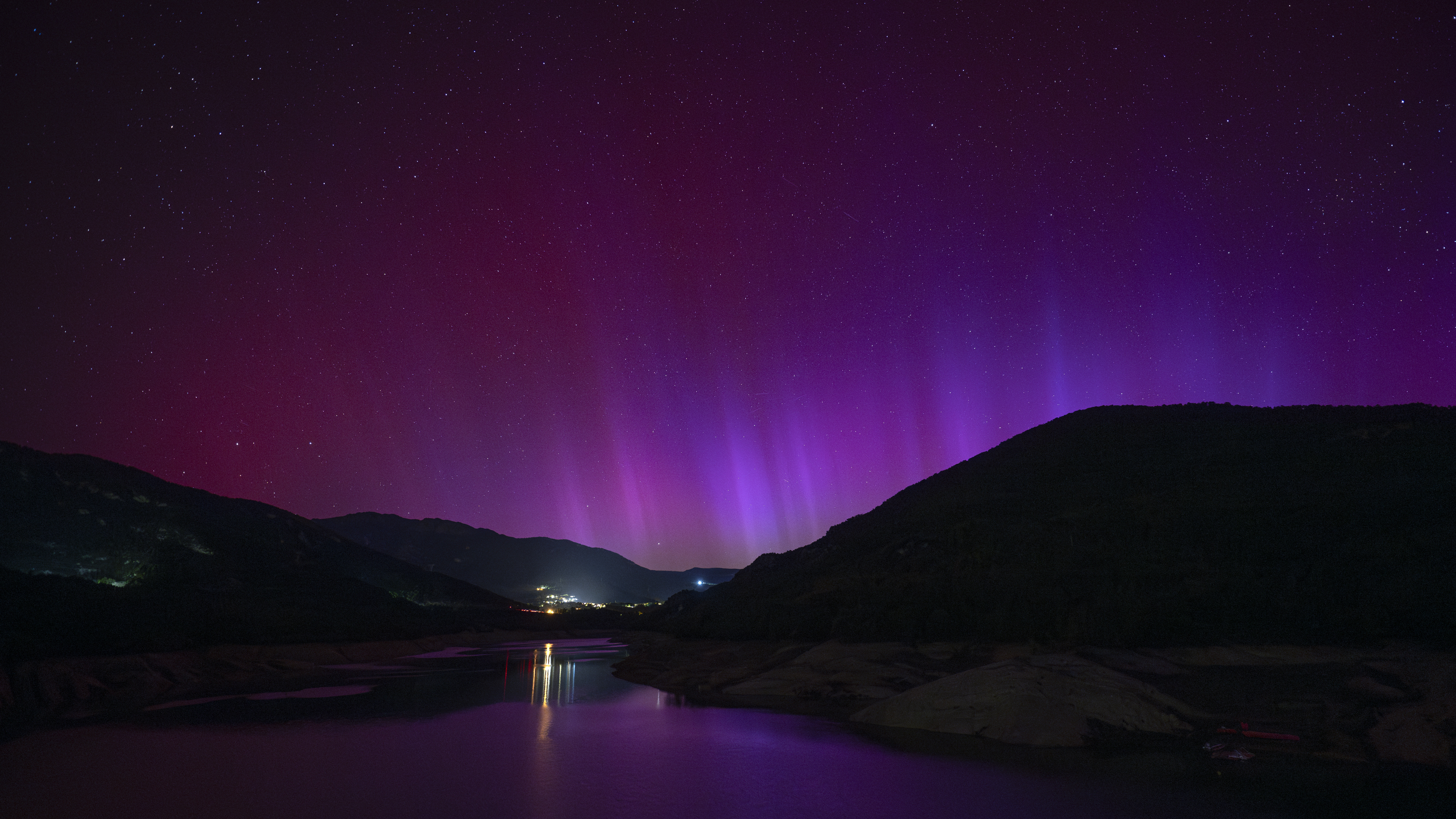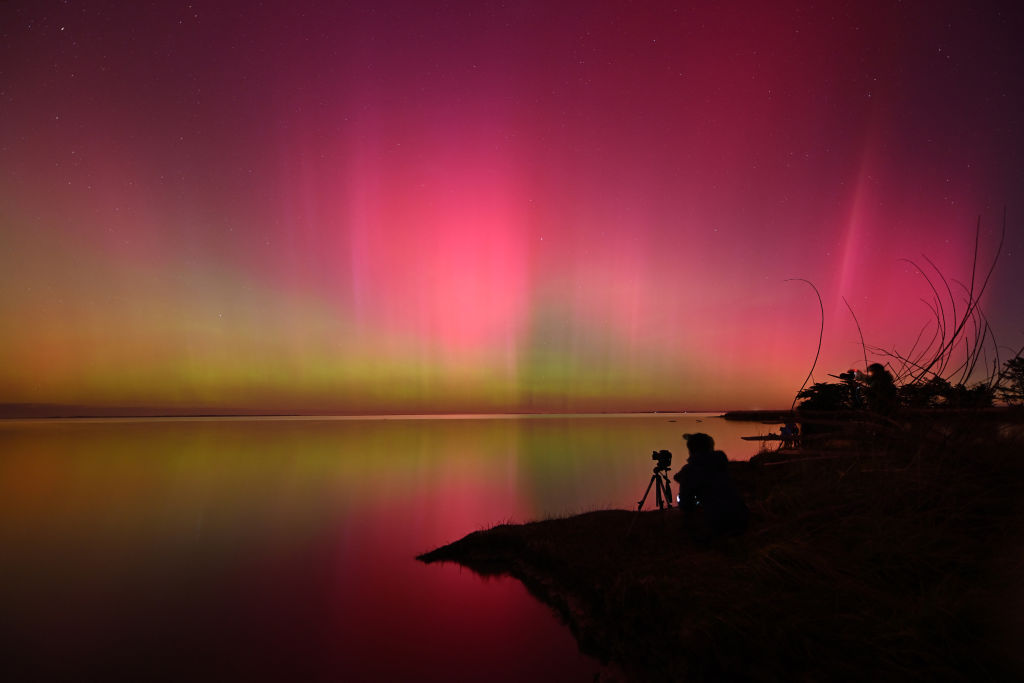
The powerful geomagnetic storm that sparked beautiful auroras across the world in May of 2024 was the first to receive a name — and its namesake is a space weather scientist who NASA scientists say was a champion in the field, and who passed away suddenly that same year.
"Jenn was an outstanding role model, colleague, and scientist who excelled in creating a sense of community across the domains of space science," her colleagues wrote in a dedication posted online in the journal Space Weather. "She will be sorely missed by many."
Dr. Jennifer Lea Gannon passed away suddenly on May 2, 2024 in Greenbelt, Maryland at the age of 45, the dedication says, commending her commitment as an editor at Space Weather. In that position, Gannon guided more than 200 manuscripts toward publication and published many of her own editorials. She was also the longest-serving member of the board, having held her role since April 2019 after starting under the journal's previous editor-in-chief, Delores Knipp.
A talented artist and pianist, Gannon led the scientific community with her deep-running understanding of geomagnetically induced currents, ground-based magnetic field disturbances, radiation-belt electron dynamics and geomagnetic storms.
She received her B.S. in physics and computer science from the University of Virginia in 2000, and her Ph.D. in physics from the University of Colorado, Boulder in 2005. She had started as the Senior Space Weather Liaison at NOAA National Environmental Satellite, Data, and Information Service (NESDIS)'s Office of Space Weather Observations a few months before she died.
"This awe-inspiring event is nature's way of rejoicing in the life of Dr. Jennifer Lea Gannon and sharing the profound knowledge of a Kp9 impact on our planet, just as she would have wanted," wrote NASA heliophysicist Madhulika Guhathakurta, who knew Gannon personally, in an online post. A Kp9 impact refers to the space weather scale, ranging from one to nine, with Kp9 being the strongest.

The geomagnetic storm that sent auroras ranging from Canada to the Netherlands in May 2024 was the first to reach Kp9 since 2003 — and this strength also played a part in it being the first of its kind to be named. These storms usually go by without informal monikers in part because most aren't significant enough to warrant naming. While the 1859 Carrington Event, thought to be the largest geomagnetic storm ever recorded, was technically the first ever named geomagnetic storm, Storm Gannon is the first to receive a name since scientists began classifying them.
Get the Space.com Newsletter
Breaking space news, the latest updates on rocket launches, skywatching events and more!
For context, geomagnetic storms are caused by fiery eruptions from the sun's surface that send charged particles zipping toward our planet. Depending on the intensity and direction of the solar eruption, those particles can lead to powerful auroras taking shape at the polar regions of our planet. When this happens, we witness what we call the Northern and Southern Lights. But when a very (very) powerful storm occurs, auroras can appear at lower latitudes as well — and Storm Gannon was one of those special cases. Guhathakurta told Space.com that "one of the most severe storms in geomagnetic history" offered the space weather community the chance to connect to scientists and honor the memory of their colleague.
"The world lost Jenn on May 2, 2024, and a week later the skies lit up with a breathtaking display of auroras, reaching as far south as Ladakh, India," she wrote. "This felt more than just a natural phenomenon; it's nature's way of celebrating Jenn's legacy and the immense contributions she made to space weather research."
Storm Gannon became famous among the public as well as scientists because of the spectacular vistas generated across the Earth's surface, overwhelming social media websites with posts streaked with greens, reds and blues and even testing Mexico's electric grid on Mother's Day.
Geomagnetic storms are becoming more frequent because the sun is reaching its solar maximum, a period of heightened solar activity that happens every 23 years. Strong geomagnetic storms were observed in the 1980s and in 2003, but the prevalence of smartphones means photos of the Northern Lights appearing in unusual places can easily be snapped and uploaded to social media, making the phenomena appear a bit newer than it is.
The name "Storm Gannon" quickly found its way into the scientific literature, too. The White House later used the name in a press briefing discussing the importance of then-President Biden's space weather strategy. The name "Mother's Day Storm" also appeared, as it was called in Mexico, but quickly gave way in favor of the scientist who studied geomagnetic activity.
The World Meteorological Organization (WMO) decides the names of terrestrial storms, hurricanes and cyclones — restricting them to a formal list of 21 names that are usually only retired if a storm becomes particularly destructive. There’s little convention on naming geomagnetic storms, but this instance could be the first of a new tradition led by Gannon’s colleagues at NASA.
"Jenn was a brilliant scientist and a beloved friend and colleague who dedicated her life to understanding geomagnetic storms and their impacts on Earth," wrote Guhathakurta in the dedication.
"She had an unparalleled passion for bridging the gap between scientific discovery and practical applications, and her mentorship inspired countless young scientists, especially women."
Join our Space Forums to keep talking space on the latest missions, night sky and more! And if you have a news tip, correction or comment, let us know at: community@space.com.
Tom Brown is a freelance science writer living in New York whose work has appeared in the Guardian and Al Jazeera. He is the recipient of the Covering Climate Now Award, the AGU Data Visualization Award and the Silver Fetisov Journalism Award for Excellence in Environmental Journalism. He graduated from the University of East Anglia's Creative Writing and English Literature course and published his debut science-fiction short story collection The Oblivious Pool with Austin Macauley Publishers in 2022.
You must confirm your public display name before commenting
Please logout and then login again, you will then be prompted to enter your display name.

